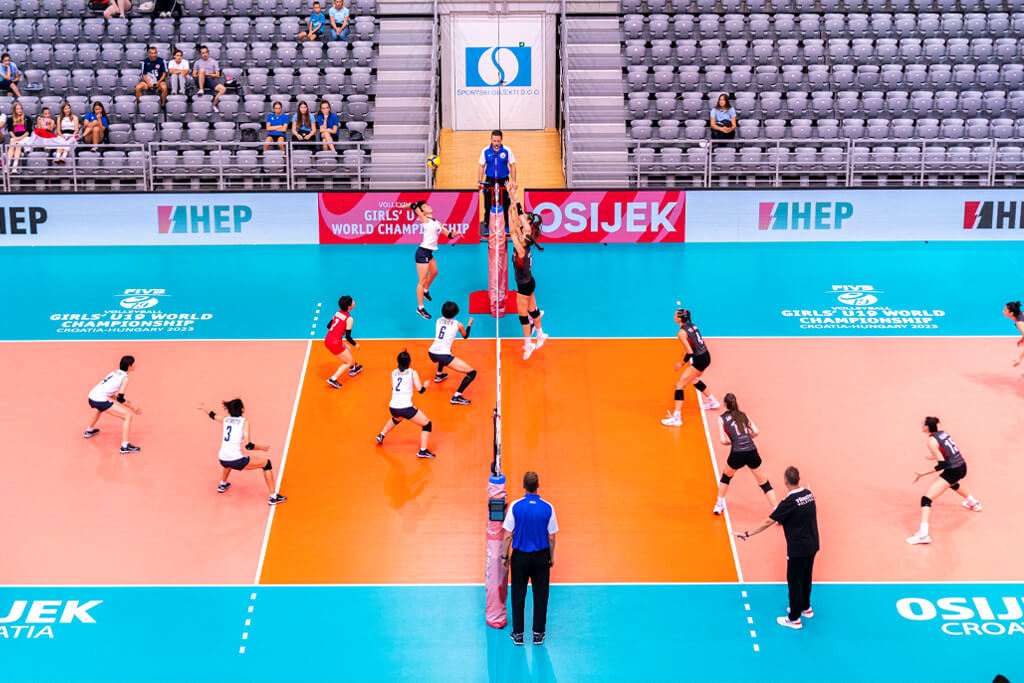What is Coverage in Volleyball? A Complete Defensive Strategy Guide
 Matt Nikishin
Matt Nikishin
Volleyball is as much about defense as it is about attack. One key defensive strategy often overlooked by beginners is coverage.
So, what is coverage in volleyball?
It’s the formation that teammates take around an attacker during a spike or hit to protect the court from blocked balls bouncing back.
This strategy helps keep the ball in play when the opposing blockers deflect a hit back toward your side of the court. Rather than losing the point, proper coverage allows teammates to quickly respond and make another play.
The Purpose of Coverage During Attacks
Preventing Point Loss
When an attacker spikes the ball and it hits the block, it often rebounds back toward your own side. If no one is there to react, the ball drops—point lost. Coverage is all about preventing that scenario.
Maximizing Second-Chance Plays
With solid coverage, your team gets a second opportunity to reorganize and attack again. This increases your chances of winning long rallies and frustrating the opposing blockers.
The Triangle Rule in Volleyball Coverage
What is the Triangle Rule?
The triangle rule refers to a smart player formation used during attacks. When a teammate jumps to hit, three other players form a triangle around them:
One player stands a few feet behind the attacker.
Two players are positioned slightly to the left and right, near the net.
How it Works in Gameplay
Let’s say your outside hitter goes up for a spike:
The setter (if not hitting) covers the left front.
The libero or middle back takes the deep behind position.
The right-side hitter or middle blocker moves to cover the right front.
This formation creates a defensive triangle that’s strong against short and deep block rebounds.
Each player has a distinct responsibility depending on their position and the offensive system in play.
| Position | Coverage Role |
| Outside Hitter | Attacker, typically covered by back row and opposite front row players |
| Setter | Covers short balls or tips near left front |
| Libero | Positioned deep behind the attacker for block rebounds |
| Middle Blocker | Covers opposite short side of the net |
| Right-Side Hitter | Supports triangle coverage on opposite front |
| Defensive Specialist | Can replace back row to strengthen deep coverage |
Situational Examples of Coverage
Outside Hitter Coverage
This is the most common situation. The back row player must be alert and ready to dig blocked hits or tips behind the hitter.
Right-Side Hitter Coverage
Often covered by the libero and setter. Since this position is opposite to the setter’s usual spot, adjustments are crucial.
Middle Attack Coverage
Here, timing is everything. Quick sets to the middle often leave little time for coverage to form, making pre-positioning essential.
Common Mistakes in Coverage and How to Avoid Them
Poor Spacing
Standing too close to the hitter can cause collisions or missed digs.Lack of Communication
Silence leads to hesitation. Use short, sharp calls like "mine" or "cover!"Late Movement
Players should anticipate the attack and be in position before the ball is hit.
Communication During Coverage Plays
Effective coverage is a result of real-time cues. Teams that talk more tend to cover better.
Verbal cues: “Cover!” “Tip!” “Deep!”
Non-verbal cues: Hand signals, eye contact, and court awareness.
Drills to Practice:
Triangle drills
Tip-and-cover simulations
Block-and-recover scrimmages
The Role of the Libero in Coverage
The libero is a back-row defensive powerhouse. In coverage:
They handle deep rebounds off blocks.
Offer quick recovery options.
Provide passing accuracy for second-chance attacks.
Their agility and reading skills make them ideal for leading backcourt coverage.
Tips for Improving Volleyball Coverage Skills
Practice 1-on-1 hitter vs. block drills with coverage setup.
Run coverage-specific drills like block rebound recovery.
Develop court vision by watching game film and positioning cues.
Keep your weight forward for faster reactions.
Conclusion: Making Coverage a Core Part of Your Game
Understanding and practicing coverage in volleyball is crucial to developing a well-rounded defensive game. The triangle rule, smart positioning, and constant communication turn chaos into opportunity. Whether you’re just starting or leading a seasoned squad, integrating coverage drills and awareness into your routine will elevate your team’s resilience and success on the court.
Great coverage isn’t about luck—it’s about preparation, positioning, and reps. But what if you’re not sure where you should’ve been after a blocked ball drops?
That’s where Rewind helps.
Upload your match footage, and a coach will break down your team’s coverage frame by frame—pointing out who should’ve moved, when, and why. Whether it’s missed triangles, poor spacing, or late reactions, you’ll see the breakdown and learn how to fix it.
Subscribe to my newsletter
Read articles from Matt Nikishin directly inside your inbox. Subscribe to the newsletter, and don't miss out.
Written by






